#appdeployment
Explore tagged Tumblr posts
Text
DevOps for Mobile: CI/CD Tools Every Flutter/React Native Dev Needs

Does shipping a new version of your mobile app feel like orchestrating a mammoth undertaking, prone to late nights, manual errors, and stressed-out developers? You're not alone. Many teams building with flexible frameworks like Flutter and React Native grapple with antiquated, laborious release processes. The dynamic landscape of mobile demands agility, speed, and unwavering quality – traits often antithetical to manual builds, testing, and deployment. Bridging this gap requires a dedicated approach: DevOps for Mobile. And central to that approach are robust CI/CD tools.
The Bottlenecks in Mobile App Delivery
Mobile application programming inherently carries complexity. Multiple platforms (iOS and Android), diverse device types, intricate testing matrices, app store submission hurdles, and the constant churn of framework and SDK updates contribute to a multifaceted environment. Without disciplined processes, delivering a high-quality, stable application with consistent velocity becomes a significant challenge.
Common Pitfalls Hindering Release Speed
Often, teams find themselves wrestling with several recurring issues that sabotage their release pipelines:
Manual Builds and Testing: Relying on developers to manually build app binaries for each platform is not only time-consuming but also highly susceptible to inconsistencies. Did you use the right signing certificate? Was the correct environment variable set? Manual testing on devices adds another layer of potential omission and delays.
Code Integration Nightmares: When multiple developers merge their code infrequently, the integration phase can devolve into a stressful period of resolving complex conflicts, often introducing unexpected bugs.
Inconsistent Environments: The "it works on my machine" syndrome is pervasive. Differences in SDK versions, build tools, or operating systems between developer machines and build servers lead to unpredictable outcomes.
Lack of Automated Feedback: Without automated testing and analysis, issues like code quality degradation, performance regressions, or critical bugs might only be discovered late in the development cycle, making them expensive and time-consuming to fix.
Laborious Deployment Procedures: Getting a mobile app from a built binary onto beta testers' devices or into the app stores often involves numerous manual steps – uploading artifacts, filling out metadata, managing releases. This is boring work ripe for automation and error.
The aggregate effect of these bottlenecks is a slow, unpredictable release cycle, preventing teams from iterating quickly based on user feedback and market demands. It's a recalcitrant problem needing a systemic resolution.
What DevOps for Mobile Truly Means
DevOps for Mobile applies the foundational principles of the broader DevOps philosophy – collaboration, automation, continuous improvement – specifically to the mobile development lifecycle. It's about fostering a culture where development and operations aspects (though mobile operations are different from traditional server ops) work seamlessly.
Shifting Left and Automation Imperative
A core tenet is "shifting left" – identifying and resolving problems as early as possible in the pipeline. Catching a build issue during commit is vastly preferable to discovering it hours later during manual testing, or worse, after deployment. This early detection is overwhelmingly facilitated by automation. Automation is not merely a convenience in DevOps for Mobile; it's an imperative. From automated code analysis and testing to automated building and distribution, machinery handles the repetitive, error-prone tasks. This frees up developers to focus on writing features and solving complex problems, simultaneously enhancing the speed, reliability, and quality of releases. As an observed pattern, teams that prioritize this shift typically exhibit higher morale and deliver better software.
Core Components of Mobile App Development Automation
Building an effective DevOps for Mobile pipeline, especially for Flutter or React Native apps, centers around implementing Continuous Integration (CI) and Continuous Delivery/Deployment (CD).
The CI/CD Tools Spectrum
Continuous Integration (CI): Every time a developer commits code to a shared repository, an automated process triggers a build. This build compiles the code, runs unit and integration tests, performs static code analysis, and potentially other checks. The goal is to detect integration problems immediately. A failed build means someone broke something, and the automated feedback loop notifies the team instantly.
Continuous Delivery (CD): Building on CI, this process automatically prepares the app for release after a successful build and testing phase. This could involve signing the application, packaging it, and making it available in a repository or artifact store, ready for manual deployment to staging or production environments.
Continuous Deployment (CD): The next evolution of CD. If all automated tests pass and other quality gates are met, the application is automatically deployed directly to production (e.g., app stores or internal distribution). This requires a high level of confidence in your automated testing and monitoring.
Implementing these components requires selecting the right CI/CD tools that understand the nuances of building for iOS and Android using Flutter and React Native.
Essential CI/CD Tools for Flutter & React Native Devs
The ecosystem of CI/CD tools is extensive, ranging from versatile, self-hosted platforms to specialized cloud-based mobile solutions. Choosing the right ones depends on team size, budget, technical expertise, and specific needs.
Picking the Right Platforms
Several platforms stand out for their capabilities in handling mobile CI/CD:
Jenkins: A venerable, open-source automation server. It's highly extensible via a myriad of plugins, offering immense flexibility. However, setting up mobile builds, especially on macOS agents for iOS, can be complex and require substantial configuration and maintenance effort.
GitLab CI/CD: Integrated directly into GitLab repositories, this offers a compelling, unified platform experience. Configuration is via a `.gitlab-ci.yml` file, making it part of the code repository itself. It's robust but also requires managing runners (build agents), including macOS ones.
GitHub Actions: Tightly integrated with GitHub repositories, Actions use YAML workflows (`.github/workflows`) to define automation pipelines. It provides hosted runners for Linux, Windows, and macOS, making iOS builds simpler out-of-the-box compared to purely self-hosted options. It's become a ubiquitous choice for projects hosted on GitHub.
Bitrise: A cloud-based CI/CD specifically designed for mobile apps. Bitrise offers pre-configured build steps (called "Workflows") and integrations tailored for iOS, Android, Flutter, React Native, and more. This specialization greatly simplifies setup and configuration, though it comes as a managed service with associated costs.
AppCenter (Microsoft): Provides integrated CI/CD, testing, distribution, and analytics for mobile apps, including React Native and Flutter support (though Flutter support might be through specific configurations). It aims for a comprehensive mobile development platform experience.
Fastlane: While not a CI server itself, Fastlane is an open-source toolset written in Ruby that simplifies cumbersome iOS and Android deployment tasks (like managing signing, taking screenshots, uploading to stores). It's almost an indispensable complement to any mobile CI system, as the CI server can invoke Fastlane commands to handle complex distribution steps.
The selection often boils down to the build environment you need (especially macOS for iOS), the required level of customization, integration with your existing VCS, and whether you prefer a managed service or self-hosting.
Specific Flutter CI/CD Considerations
Flutter projects require the Flutter SDK to be present on the build agents. Both iOS and Android builds originate from the single Flutter codebase.
Setup: The CI system needs access to the Flutter SDK. Some platforms, like Bitrise, have steps explicitly for this. On Jenkins/GitLab/GitHub Actions, you'll need a step to set up the Flutter environment (often using tools like `flutter doctor`).
Platform-Specific Builds: Within the CI pipeline, you'll trigger commands like `flutter build ios` and `flutter build apk` or `flutter build appbundle`.
Testing: `flutter test` should run unit and widget tests. You might need device/emulator setups or cloud testing services (like Firebase Test Lab, Sauce Labs, BrowserStack) for integration/end-to-end tests, though this adds complexity.
Signing: Signing both Android APKs/App Bundles and iOS IPAs is crucial and requires careful management of keystores and provisioning profiles on the CI server. Fastlane is particularly useful here for iOS signing complexity management.
Teams observed grappling with Flutter CI/CD often struggle most with the iOS signing process on CI platforms.
Specific React Native CI/CD Considerations
React Native projects involve native build tools (Xcode for iOS, Gradle for Android) in addition to Node.js and yarn/npm for the JavaScript parts.
Setup: The build agent needs Node.js, npm/yarn, Android SDK tools, and Xcode (on macOS). NVM (Node Version Manager) or similar tools are helpful for managing Node versions on the build agent.
Platform-Specific Steps: The CI pipeline will have distinct steps for Android (`./gradlew assembleRelease` or `bundleRelease`) and iOS (`xcodebuild archive` and `xcodebuild exportArchive`).
Dependencies: Ensure npm/yarn dependencies (`yarn install` or `npm install`) and CocoaPods dependencies for iOS (`pod install` from within the `ios` directory) are handled by the pipeline before the native build steps.
Testing: Jest is common for unit tests. Detox or Appium are popular for end-to-end testing, often requiring dedicated testing infrastructure or cloud services.
Signing: Similar to Flutter, secure management of signing credentials (Android keystores, iOS certificates/profiles) is essential on the CI server. Fastlane is highly relevant for React Native iOS as well.
Based on project analysis, React Native CI/CD complexity often arises from the interaction between the JavaScript/Node layer and the native build processes, particularly dependency management (`node_modules`, CocoaPods) and environmental differences.
Implementing a Robust Mobile CI/CD Pipeline
Building your Mobile App Development Automation pipeline is not a weekend project. It requires deliberate steps and iteration.
Phased Approach to Adoption
Approaching CI/CD implementation incrementally yields better results and less disruption.
Phase One: Code Quality and Basic CI
Set up automated linters (e.g., ESLint/Prettier for React Native, `flutter analyze` for Flutter).
Configure CI to run these linters on every push or pull request. Fail the build on lint errors.
Integrate unit and widget tests into the CI build process. Fail the build on test failures. This is your foundational CI.
Phase Two: Automated Building and Artifacts
Extend the CI process to automatically build unsigned Android APK/App Bundle and iOS IPA artifacts on successful commits to main/develop branches.
Store these artifacts securely (e.g., S3, built-in CI artifact storage).
Focus on ensuring the build environment is stable and consistent.
Phase Three: Signing and Internal Distribution (CD)
Securely manage signing credentials on your CI platform (using secrets management).
Automate the signing of Android and iOS artifacts.
Automate distribution to internal testers or staging environments (e.g., using Firebase App Distribution, HockeyApp/AppCenter, TestFlight). This is where Fastlane becomes exceedingly helpful.
Phase Four: Automated Testing Enhancement
Integrate automated UI/integration/end-to-end tests (e.g., Detox, Appium) into your pipeline, running on emulators/simulators or device farms. Make passing these tests a mandatory step for deployment.
Consider performance tests or security scans if applicable.
Phase Five: App Store Distribution (Advanced CD/CD)
Automate the process of uploading signed builds to the Apple App Store Connect and Google Play Console using tools like Fastlane or platform-specific integrations.
Start with automating beta releases to app stores.
Move towards automating production releases cautiously, building confidence in your automated tests and monitoring.
Integrating Testing and Code Signing
These two elements are pragmatic pillars of trust in your automated pipeline.
Testing: Automated tests at various levels (unit, integration, UI, E2E) are your primary quality gate. No pipeline step should proceed without relevant tests passing. This reduces the likelihood of bugs reaching users. Integrate code coverage tools into your CI to monitor test effectiveness.
Code Signing: This is non-negotiable for distributing mobile apps. Your CI system must handle the complexities of managing and applying signing identities securely. Using features like secret variables on your CI platform to store certificates, keys, and keystore passwords is essential. Avoid hardcoding credentials.
Adopting a systematic approach, starting simple and progressively adding complexity and automation, is the recommended trajectory.
Common Errors and How to Navigate Them
Even with excellent tools, teams stumble during DevOps for Mobile adoption. Understanding common missteps helps circumvent them.
Avoiding Integration Headaches
Ignoring Native Layer Nuances: Flutter and React Native abstraction is powerful, but builds eventually hit the native iOS/Android toolchains. Errors often stem from misconfigured native environments (Xcode versions, Gradle issues, signing problems) on the CI agent. Ensure your CI environment precisely mirrors your development environment or uses reproducible setups (like Docker if applicable, though tricky for macOS).
Credential Management Snafus: Hardcoding API keys, signing credentials, or environment-specific secrets into code or build scripts is a critical security vulnerability. Always use the CI platform's secret management features.
Flaky Tests: If your automated tests are unreliable (sometimes passing, sometimes failing for no obvious code reason), they become a major bottleneck and erode trust. Invest time in making tests deterministic and robust, especially UI/E2E tests running on emulators/devices.
Maintaining Pipeline Health
Neglecting Pipeline Maintenance: CI/CD pipelines need attention. Dependency updates (SDKs, Fastlane versions, etc.), changes in app store requirements, or tool updates can break pipelines. Regularly allocate time for pipeline maintenance.
Slow Builds: Long build times kill productivity and developer flow. Continuously optimize build times by leveraging caching (Gradle cache, CocoaPods cache), using faster machines (if self-hosting), or optimizing build steps.
Over-Automating Too Soon: While the goal is automation, attempting to automate production deployment from day one without robust testing, monitoring, and rollback strategies is foolhardy. Progress gradually, building confidence at each phase.
The vicissitudes of platform updates and tooling compatibility necessitate continuous vigilance in pipeline maintenance.
Future Trends in Mobile App Development Automation
The domain of Mobile App Development Automation isn't static. Emerging trends suggest even more sophisticated pipelines in 2025 and beyond.
AI/ML in Testing and Monitoring
We might see greater integration of Artificial Intelligence and Machine Learning:
AI-Assisted Test Case Generation: Tools suggesting new test cases based on code changes or user behavior data.
Smart Test Selection: ML models identifying which tests are most relevant to run based on code changes, potentially reducing build times for small changes.
Anomaly Detection: Using ML to monitor app performance and crash data, automatically flagging potential issues surfaced during or after deployment.
Low-Code/No-Code DevOps
As CI/CD tools mature, expect more platforms to offer low-code or no-code interfaces for building pipelines, abstracting away YAML or scripting complexities. This could make sophisticated DevOps for Mobile accessible to a wider range of teams. The paradigm is shifting towards usability.
Key Takeaways
Here are the essential points for Flutter and React Native developers considering or improving their DevOps for Mobile practice:
Manual mobile release processes are inefficient, error-prone, and hinder rapid iteration.
DevOps for Mobile, centered on CI/CD automation, is imperative for quality and speed.
CI/CD tools automate building, testing, and deploying, enabling faster feedback loops.
Choose CI/CD tools wisely, considering mobile-specific needs like macOS builds and signing.
Platforms like Bitrise specialize in mobile, while Jenkins, GitLab CI, and GitHub Actions are versatile options often enhanced by tools like Fastlane.
Implement your Robust Mobile CI/CD pipeline in phases, starting with code quality and basic CI, progressing to automated distribution and testing.
Prioritize automated testing at all levels and secure code signing management in your pipeline.
Be mindful of common errors such as native layer configuration issues, insecure credential handling, flaky tests, and neglecting pipeline maintenance.
The future involves more intelligent automation via AI/ML and more accessible pipeline configuration through low-code/no-code approaches.
Frequently Asked Questions
What are the key benefits of 'DevOps for Mobile: CI/CD Tools Every Flutter/React Native Dev Needs'?
Adopting CI/CD drastically speeds up mobile development and increases application reliability.
How does 'DevOps for Mobile: CI/CD Tools Every Flutter/React Native Dev Needs' help reduce errors?
Automation within CI/CD pipelines minimizes human errors common in manual build and release steps.
Why is 'DevOps for Mobile: CI/CD Tools Every Flutter/React Native Dev Needs' vital for team collaboration?
CI ensures code integration issues are detected early, fostering better collaboration and less conflict.
Can 'DevOps for Mobile: CI/CD Tools Every Flutter/React Native Dev Needs' apply to small projects?
Yes, even small teams benefit significantly from the stability and efficiency gains provided by automation.
Where does 'DevOps for Mobile: CI/CD Tools Every Flutter/React Native Dev Needs' save the most time?
Significant time savings come from automating repetitive tasks like building, testing, and distributing.
Recommendations
To streamline your Mobile App Development Automation, especially within the dynamic world of Flutter and React Native, embracing CI/CD is non-negotiable for competitive delivery. The choice of CI/CD tools will hinge on your team's particular pragmatic needs and infrastructure. Begin by automating the most painful parts of your current process – likely building and basic testing. Incrementally layer in more sophistication, focusing on solidifying testing and perfecting secure distribution methods. Stay abreast of evolving tooling and methodologies to keep your pipeline performant and relevant. The investment in DevOps for Mobile pays exponential dividends in terms of developer satisfaction, product quality, and business agility. Start planning your CI/CD adoption strategy today and experience the transformation from manual burden to automated excellence. Share your experiences or ask questions in the comments below to foster collective learning.
#DevOps#MobileDevOps#FlutterDevelopment#ReactNative#CI/CD#AppDevelopment#MobileAppDevelopment#FlutterDev#ReactNativeDev#DeveloperTools#SoftwareDevelopment#AutomationTools#MobileDevelopmentTips#ContinuousIntegration#ContinuousDeployment#CodePipeline#TechStack#BuildAutomation#AppDeployment#2025Development
0 notes
Text
0 notes
Text
#ReactNative#AndroidDevelopment#MobileAppRelease#APKBuild#AppTesting#Gradle#Debugging#TechTips#AppDeployment#MobileDev#MobileAppSecurity#ReactNativeDevelopment#DevLife#AppOptimization#Firebase#PlayStoreLaunch#RlogicalTechsoft#MobileEngineering#CodeToLaunch
1 note
·
View note
Text
Deploying a MERN (MongoDB, Express, React, Node.js) stack application is a crucial step to make your app accessible to users. Choosing the right deployment platform depends on your needs:
AWS (Amazon Web Services) is ideal for scalable, high-performance applications.
Vercel is great for quick and easy deployment, especially for frontend applications.
In this guide, we will walk through deploying a MERN stack application on AWS (using EC2 and S3) and Vercel (for serverless hosting).
#MERNStack#AWS#Vercel#Deployment#FullStackDevelopment#WebDevelopment#NodeJS#MongoDB#ExpressJS#React#AWSDeployment#VercelDeployment#CloudHosting#CloudComputing#WebAppDeployment#DevOps#CI/CD#Serverless#Heroku#AWSAmplify#FrontendDevelopment#BackendDevelopment#AppDeployment#ReactApp#MongoDBIntegration#MERNApp#DeploymentGuide#AWSHosting#VercelHosting#WebAppHosting
0 notes
Text
How Cross Platform Mobile App Development Services Drive Business Growth
In today’s fast-paced digital world, mobile apps are more than just a convenience; they are crucial for businesses of all sizes. They connect companies with customers, streamline sales, and enhance service delivery. Whether you’re launching a startup or scaling an existing business, having a mobile app can set you apart from the competition. That’s where Cross Platform mobile app development services come into play. These services allow you to create apps that function seamlessly on both iOS and Android devices using a single codebase. This not only saves you time and money but also enhances user engagement.

In this blog post, I’ll explore how cross-platform mobile app development can address common challenges faced by small and medium-sized enterprises (SMEs) and larger companies, ultimately helping your business thrive.
The Importance of Mobile Apps for Business Growth
1) Embracing the Mobile-First Economy
With more people using their smartphones to access the internet than ever before, businesses must prioritize mobile app development. This shift offers small businesses the opportunity to compete with larger companies by providing an accessible and user-friendly mobile experience.
2) Meeting Customer Expectations
Today’s consumers expect mobile experiences to be smooth, intuitive, and efficient. A well-designed app can significantly enhance customer satisfaction, encouraging users to return and recommend your business to others. In a world full of options, a top-notch app can be your secret weapon for success.
3) Gaining a Competitive Edge
A high-quality mobile app can help you stand out in a crowded market. By reaching more customers and simplifying operations, your app can boost sales and foster brand loyalty. For SMEs, this competitive advantage can be a game changer.
Benefits of Cross Platform Mobile App Development
1. Cost Efficiency
Lower Development Costs: Developing separate apps for iOS and Android can be prohibitively expensive. Cross-platform development allows you to create one app that serves both platforms, which means you can allocate your budget more effectively.
Maintenance Efficiency: With a single codebase, updating and fixing bugs is a breeze. You can make changes across both platforms simultaneously, saving time and resources.
2. Faster Time-to-Market
Simultaneous Platform Launch: Launching your app on both iOS and Android at the same time is crucial for staying competitive. Cross-platform development enables this quick rollout.
Shorter Development Cycles: Frameworks like React Native and Flutter expedite the development process, allowing you to bring your app to market faster than traditional methods.
3. Wider Market Reach
Access to Diverse User Bases: A cross-platform app targets both iPhone and Android users, significantly expanding your potential audience.
Consistency in User Experience: This development approach ensures that users enjoy a uniform experience across devices, helping to build brand loyalty.
4. Easier Iteration and Scalability
Streamlined Updates: Cross-platform apps can be updated easily, which is vital as your business grows and evolves.
Scalability for Future Growth: Designed to adapt, cross-platform apps allow you to add features and scale your business effortlessly.
Cross Platform Development Technologies Driving Business Growth
Popular Cross-Platform App Development Frameworks:
React Native: This framework from Facebook enables developers to create high-performance apps that look and feel native on both platforms.
Flutter: Developed by Google, Flutter is known for its speed and beautiful UI designs, making it perfect for startups looking to make a quick impact.
Xamarin: Ideal for businesses using Microsoft tools, Xamarin allows for easy integration and seamless development.
Ionic: This framework leverages web technologies to create mobile apps rapidly, making it a favorite among small businesses.
How Each Framework Supports Growth
React Native: Apps like Instagram use React Native for its flexibility and performance, enabling rapid development.
Flutter: Startups like Reflectly use Flutter to quickly build engaging mobile experiences that captivate users.
Xamarin: Larger corporations leverage Xamarin to integrate with their existing systems, maximizing their tech investments.
Ionic: Ionic allows developers to create apps quickly, providing a significant advantage for small businesses with limited resources.
Cross Platform Development vs. Native App Development
1. Cost Comparison
Cross-platform development is generally more cost-effective than creating separate native apps. This allows small businesses to stretch their budgets further while maintaining quality.
2. Performance Comparison
Though native apps traditionally perform better, cross platform app development frameworks have made significant strides. With the right optimization, you can achieve near-native performance.
3. User Experience
Concerns about user experience are common, but modern tools and best practices can help you deliver an exceptional experience comparable to native apps.
The Role of Cross Platform Development in Digital Transformation
1) Supporting Innovation
Cross-platform development allows businesses to quickly implement new ideas. You can easily adjust features based on user feedback, keeping your app fresh and relevant.
2) Agility and Flexibility
As companies transition to a more mobile-centric approach, cross-platform development provides the agility needed to respond to changing customer demands.
Case Studies: Businesses That Achieved Growth with Cross Platform Apps
Case Study 1: A Small Business Success
A small online retail store utilized cross-platform development to launch a shopping app. This move allowed them to engage with customers on both iOS and Android, resulting in a remarkable 150% increase in user engagement within six months.
Case Study 2: A Corporate Transformation
A large corporation revamped its customer service app using cross-platform solutions, reducing operational costs by 30% and significantly improving customer satisfaction ratings.
Key Takeaways from These Success Stories
Broadened Reach: Both case studies illustrate how cross-platform apps can significantly expand a business’s customer base.
Cost Efficiency: By saving on development and maintenance costs, these businesses could reinvest in other crucial areas.
Enhanced Engagement: The increased user engagement highlights the advantages of having a quality mobile app.
Challenges in Cross Platform Development and How to Overcome Them
1) Performance Issues
While performance can be a concern, the right tools and optimizations can help. Regular testing ensures that your app runs smoothly on both platforms.
2) Design and User Experience Consistency
To deliver a great user experience, adhere to design guidelines for both iOS and Android. Close collaboration between designers and developers is essential.
3) Security Concerns
Security is paramount. Implement strong security protocols and conduct regular vulnerability assessments to keep your app secure.
4) Limited Technical Expertise
Small businesses might lack in-house technical skills. Partnering with experienced cross-platform developers can fill this gap and guide your strategy.
5) Ongoing Updates and Support
Keeping your app updated across multiple platforms can be challenging. Seek development partners who provide seamless updates and ongoing support.
6) Digital Transformation
Transitioning to a mobile-first approach can be daunting. A well-structured plan incorporating cross-platform development can make this shift smoother for traditional businesses.
Conclusion
Cross Platform mobile app development services create apps that operate on both iOS and Android using a single codebase. This approach reduces costs, speeds up time-to-market, enhances user engagement, and allows for easier updates, making it ideal for small and medium-sized enterprises and larger corporations alike.
Are you ready to elevate your business with Cross Platform mobile app development services? Contact iQlance today! Let’s discuss how our customized solutions can help you innovate, grow, and transform your digital strategy into a powerful tool for success.
Call us at (+1) 469–398–8817 to hire our expert cross-platform mobile app developers today!
#crossplatformmobileappdevelopmentservices#iqlance#mobileappdevelopmentservices#crossplatformappdevelopment#businessgrowthwithmobileapps#crossplatformappdevelopmentframeworks#mobileappdevelopmentforbusinesses#mobileappgrowthstrategies#mobiledevelopmentcostsavings#mobileappuserengagement#mobileappscalability#mobileappsforstartups#reactnativebusinessapps#flutterforbusinessapps#androidandiosappdevelopment#appdevelopmentframeworks#mobilefirsteconomy#appdeployment#singlecodebase#businessdigitaltransformation#simultaneousapprelease#costeffectiveappdevelopment#enterprisemobilitysolutions#mobileappoptimization#customerengagementthroughmobileapps#howcrossplatformmobileappshelsmallbusinessesgrow#bestcrossplatformframeworksformobileappdevelopment#benefitsofcrossplatformappdevelopmentforstartups#howtoreducemobileappdevelopmentcostswithcrossplatformsolutions#crossplatformvsnativeappdevelopmentforbusinessgrowth
0 notes
Text
Innovative Mobile App Development Solutions for Businesses
At SN Digitech, we specialize in creating cutting-edge mobile apps tailored to meet your business needs. Our team of expert developers is committed to delivering user-friendly, secure, and scalable mobile applications that enhance customer engagement and drive business growth. We design custom apps across iOS, Android, and cross-platform frameworks, ensuring seamless functionality and a superior user experience.
From concept to deployment, we follow an agile approach, focusing on performance, reliability, and innovation. Whether it's a startup looking to build an MVP or an established brand aiming to enhance its digital presence, SN Digitech provides end-to-end mobile app development services, including UI/UX design, coding, testing, and post-launch support. Empower your business with our tailor-made mobile solutions and stay ahead in the competitive market.
Let us turn your vision into reality with a powerful mobile app that delivers results!
#MobileAppDevelopment#AppDevelopment#iOSAppDevelopment#AndroidAppDevelopment#CrossPlatformApps#CustomAppDevelopment#MobileSolutions#AppDesign#UIUXDesign#AppDevelopmentServices#MobileAppDesign#BusinessApps#EnterpriseApps#MobileAppDevelopers#AppDevelopmentCompany#AppTesting#AppDeployment#AgileDevelopment#AppOptimization#AppMaintenance
0 notes
Text
#Containerization#LinuxTechnology#Namespaces#ControlGroups#SELinux#ResourceManagement#SecurityEnhancement#AppDeployment#DigitalTransformation#SystemAdministration#EfficientApplications#TechInnovation#DevOps#LinuxContainers#ITInfrastructure
0 notes
Text
Cracking the Code: Unveiling Strategies and Tactical Approaches for App Deployment in Today's Dynamic Market
Unveil strategic insights and tactical approaches for successful #appdeployment in today's dynamic market with "Cracking the Code." Gain the edge with expert guidance on navigating the ever-evolving landscape of application deployment.
https://systimanx.com/.../App-Deployment-Strategies-in...
#technology#app design#app development#app development company#appdevelopmentcompanyinmadurai#app development services
0 notes
Text

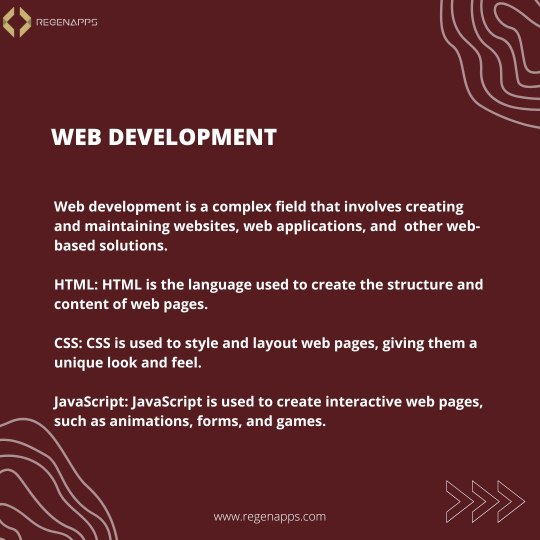
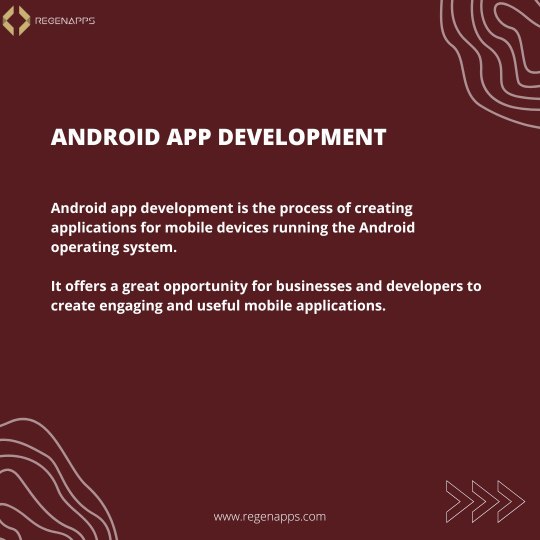


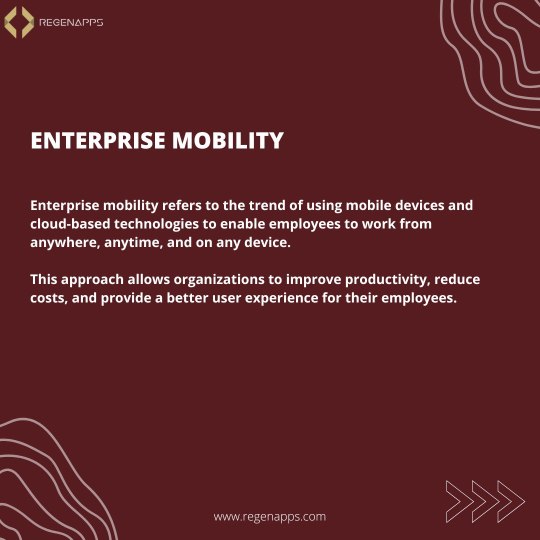


Our company specializes in creating innovative and user-friendly mobile applications for businesses and individuals.
We offer a range of services including custom app design, development, testing, and deployment on both iOS and Android platforms.
Our team of experienced developers and designers work closely with clients to understand their unique requirements and build apps that are tailored to their specific needs.
Kindly Checkout our services. if there is any difficulty to understand anything, feel free to contact our experts.
Website: www.regenapps.com
#MobileAppDevelopment#CustomAppDesign#iOSDevelopment#AndroidDevelopment#UserFriendlyApps#InnovativeApps#MobileAppTesting#AppDeployment#MobileAppServices#appdevelopmentcompany11:10 AM
1 note
·
View note
Photo
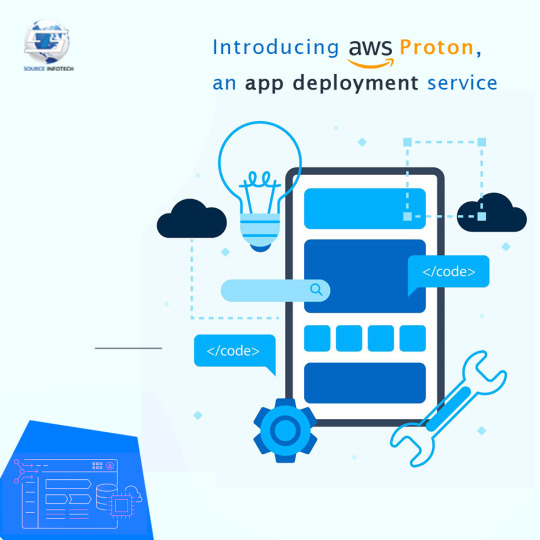
Amazon launched AWS Proton that can automate and manage infrastructure provisioning and code deployments for serverless applications.If you’re looking for experts to work on your app project, contact our team at www.sourceinfotech.com
0 notes
Photo
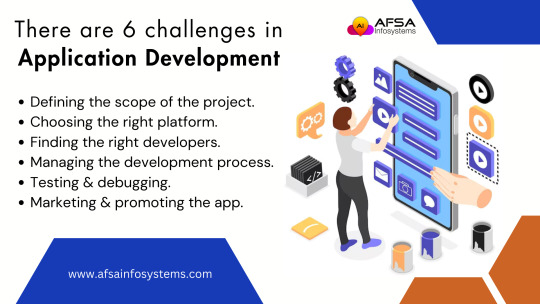
Despite the challenges, application development can be a rewarding experience. By carefully planning and executing the development process, it is possible to create an app that is successful and meets the needs of users. For more details visit Us:- http://afsainfosystems.com #AFSAInfosystems #CloudComputing #business #applicationdevelopment #cloud #help #testing #market #development #architecture #designing #appdeployment #experience #planning
0 notes
Text
React Native Developers — Ready to Ship Your APK to the World?
Getting from code to a fully functional, signed, and optimized APK file requires more than hitting "Build." Whether preparing for internal testing or a full production release, understanding the end-to-end process is key to avoiding last-minute issues and performance bottlenecks.
🔍 Here’s a quick breakdown of the essential steps:
1️ Debugging Setup 2️ Generate a Release Keystore 3️ Configure Gradle for Release 4️ Build the APK 5️ Test, Test, and Test Again 6️ Release and Monitor
🔗 For a detailed step-by-step breakdown check out the full blog by Rlogical Techsoft: 👉 https://www.rlogical.com/blog/steps-to-follow-to-debug-and-release-apk-file-in-react-native/
Whether you're pushing your first app or releasing updates at scale, following these practices helps ensure a smooth and secure launch.
#ReactNative#AndroidDevelopment#MobileAppRelease#APKBuild#AppTesting#Gradle#Debugging#TechTips#AppDeployment#MobileDev#MobileAppSecurity#ReactNativeDevelopment#DevLife#AppOptimization#Firebase#PlayStoreLaunch#RlogicalTechsoft#MobileEngineering#CodeToLaunch
1 note
·
View note
Text
Cracking the Code: Unveiling Strategies and Tactical Approaches for App Deployment in Today's Dynamic Market
Unveil strategic insights and tactical approaches for successful #appdeployment in today's dynamic market with "Cracking the Code." Gain the edge with expert guidance on navigating the ever-evolving landscape of application deployment.
0 notes
Photo
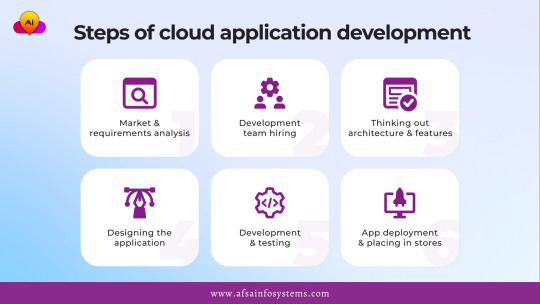
Steps of Cloud application development
For more details visit Us:- http://afsainfosystems.com
#AFSAInfosystems
#CloudComputing #business #applicationdevelopment #cloud #help #testing #market #development #architecture #designing #appdeployment
0 notes